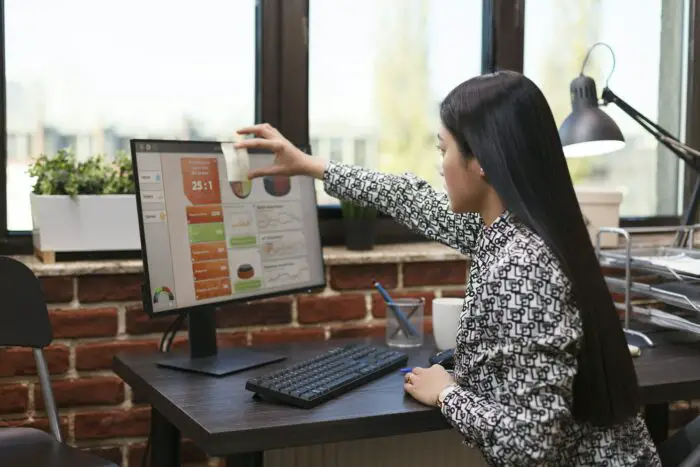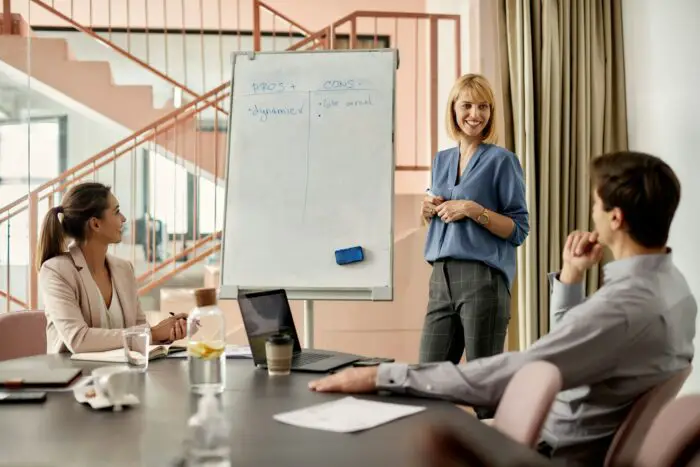Flipping content in PowerPoint allows you to reveal information in creative ways during a presentation. You can use flipping to introduce new concepts, showcase before-and-after comparisons, or add some fun and surprise for your audience.
In this comprehensive guide, you’ll learn different techniques to flip content in PowerPoint, along with tips to use them effectively.
Introduction to Flipping Content in PowerPoint
Flipping content refers to rotating text, images, or other slide elements to reveal the backside. This flipping motion attracts attention and builds anticipation for what will be shown next.
PowerPoint includes two built-in flip transitions:
- Flip – Flips the entire slide content vertically or horizontally
- Wipe – Wipes the existing content to reveal the next slide (appears like a flip transition)
You can also create custom flip animations for individual slide elements without impacting other content. This allows for more control and creativity.
When to Use Flipping Transitions
Flipping works well for:
- Revealing information piece-by-piece
- Showcasing before-and-after scenarios
- Introducing opposing concepts
- Adding fun or surprise
However, overusing flips can seem gimmicky. Use them sparingly and purposefully to maximize their impact. Subtle flips also work better than over-the-top effects in most business presentations.
How to Flip an Entire Slide Horizontally
The quickest way to flip a slide is using the Flip transition:
- Select the slide you want to flip
- Go to Transitions tab
- Click Flip transition
- Choose horizontal or vertical flip
- Click to preview flip
You can apply this transition to multiple slides at once or set it as default for all slides.
Flip transition in PowerPoint
Applying a horizontal Flip transition
How to Wipe Between Slides
The Wipe transition wipes content to reveal the next slide, creating a flip book effect:
- Insert 2+ slides
- Select the 2nd (and additional) slide(s)
- Go to Transitions tab
- Select the Wipe transition
- Choose the wipe direction
- Click to preview transition
You can combine the Wipe transition with other effects like Fade to create multi-step animations.
Wipe transition in PowerPoint
Applying a vertical Wipe transition between slides
How to Animate Flipping Objects
For more control, you can flip individual text boxes, images, or shapes using custom animations:
- Insert object on 2 separate slides
- Select object on 1st slide
- Go to Animations tab
- Apply entrance animation like Fade
- Repeat for 2nd slide object with exit animation like Fade
Sequence and timing is key for a realistic flip effect.
Custom flip animation in PowerPoint
Creating a custom flip animation for an image
Creative Ways to Use Flipping
Here are some ideas to inspire your next presentation:
- Flip cards to reveal quiz answers
- Animate a light switch flipping on
- Rotate products to show additional features
- Flip through book pages
- Turn over playing cards
- Unveil a mirror image or reflection
- Show opposites or reversals
Think about clever ways to integrate flipping to better showcase your content.
Tips for Using Flips Effectively
Follow these best practices when flipping PowerPoint elements:
- Use subtly – Avoid over-the-top flipping unless intentionally going for a dramatic or playful effect
- Consider direction – Choose left/right or up/down based on content
- Set proper timing – Use smooth, realistic animations
- Test transitions – Preview how flips will look in slideshow mode
- Apply sparingly – Limit flipping to keep it impactful
- Match style – Make flips congruent with overall tone of presentation
The most effective flips go unnoticed by blending seamlessly into the story you tell.
Conclusion
Flipping slide content is an easy way to add polish, reveal information, and incorporate motion into a PowerPoint presentation.
Use PowerPoint’s built-in Flip and Wipe transitions to quickly flip entire slides. For more control, create custom entrance and exit animations for individual slide objects.
Integrate flipping purposefully and subtly for best results. With the right technique, this effect can grab attention, introduce new concepts, and showcase before/after comparisons without going overboard.
So next time you create a PowerPoint presentation, consider incorporating a few well-placed flips to elegantly reveal key points and captivate your audience.




